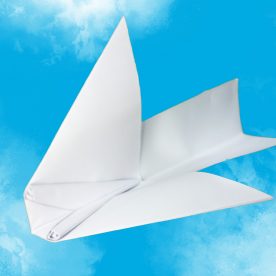The history of paper planes can be traced back to ancient China, where the first paper was invented over 2,000 years ago. The art of paper folding, known as origami, also originated in China and was later introduced to Japan. It is believed that paper planes were first created by Chinese children who folded paper into the shapes of birds and other animals.
The use of paper for recreational purposes, including the creation of paper planes, spread to Japan and other parts of Asia. In Japan, paper planes were known as “tako” (meaning octopus), and were often used in religious ceremonies. In other parts of Asia, paper planes were used for both entertainment and practical purposes, such as sending messages over long distances.
Paper planes made their way to Europe and the Americas in the 19th and 20th centuries, where they became a popular pastime for children and adults alike. In the early 1900s, paper planes were used in World War I as a means of sending messages and carrying small items between soldiers on the front lines.
In the years following World War II, paper planes became a popular form of entertainment for children. Many schools and youth organizations held competitions to see whose paper plane could fly the farthest or stay in the air the longest.
In recent years, the popularity of paper planes has continued to grow, thanks in part to the internet and social media. There are now countless websites, videos, and tutorials dedicated to teaching people how to make different types of paper planes. Some people even compete in national and international paper plane competitions, where the planes are judged on factors such as distance, duration, and accuracy.
In conclusion, the history of paper planes is a fascinating one that spans thousands of years and several continents. From their origins in ancient China to their modern-day popularity as a pastime for children and adults alike, paper planes continue to capture the imagination and inspire creativity in people of all ages.









